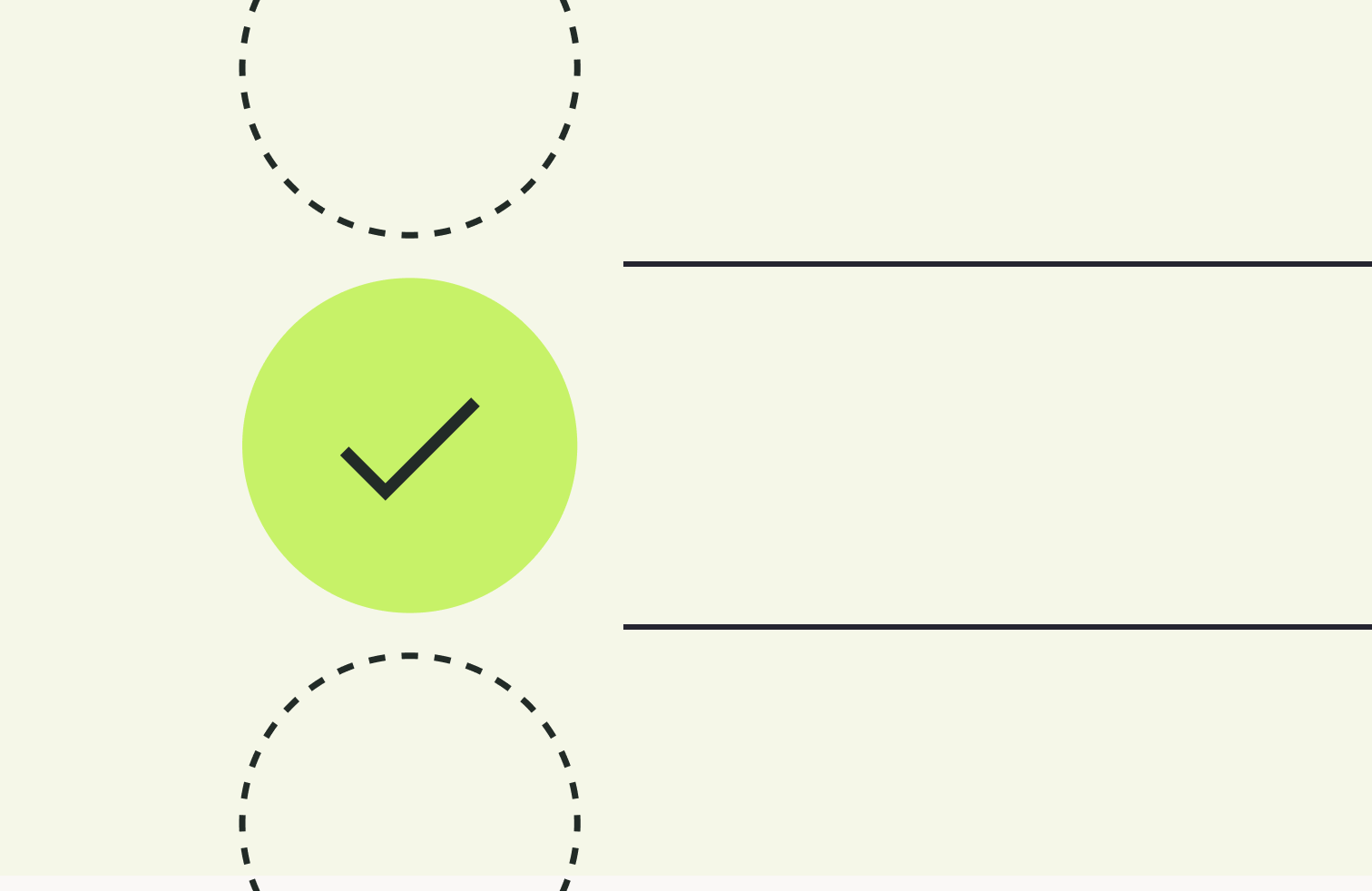Solutions
Customer Support
Resources
Buyers enter the sales process more informed than ever before. In fact, 71 per cent of consumers say they prefer to gather information themselves rather than speak with a human, according to HubSpot. This means that people do a majority of their research before they engage with a sales professional.
So how should your strategy change to reflect this? Well, offering prospects better value and solutions is one way forward. Building trust with customers and coming up with new exciting ways to engage prospects is key, as well as looking into how automation can further enable your sales team.
We’ve put 9 examples of the best sales tactics for 2026, from digging deep into prospects' pain to how you can personalize outreach and make the best use of sales automation software.
Sales tactics refer to the methods and techniques used by sales professionals to convince customers to purchase their product or service.
These tactics by nature intend to influence a customer's decision-making process, identify the exact way your product or service can help them and ultimately result in a closed deal.
This doesn’t necessarily mean salespeople are always ‘tactical’; some of these tips are simply best practices for sales professionals to close more deals and capture more revenue.
Knowing how you can help solve a problem or ‘pain’ point for your customers will make them more likely to purchase your product.
The term ‘pain point’ refers to the issues that customers and prospects experience that your business could solve. For example, in SaaS businesses, a common pain point is with data visibility. The right CRM solution will commonly be used to ‘solve’ this pain.
Talking about the benefits and outstanding features of your product is necessary but customers are more likely to sign a deal if they can actively see value. But how do you demonstrate these?
The best way to discover pain is to engage with the customer. Ask targeted questions and listen intently to their responses, take note of what it is the customer is frustrated by. This can also come from your current customers, make sure the channels are open for them to feedback on the product.
Knowing the pain your product solves for current customers can help you to identify the areas it could help prospects too. Looking at current customers who work in similar sectors means you can give customers real-life examples of how your product has solved pain for customers, granted they’re relevant.

The best salespeople don’t just rely on their initial training, they are always learning. Having the constant drive to improve your technical skills will go a long way in helping to improve your sales experience.
To consistently improve you need to be keeping on top of industry and product knowledge. It’s much easier to sell to customers when you’re up to date and informed on your product and its place in the market - including compared to its competitors.
Top salespeople are engaged with their product and its capabilities, so you can answer any more complex questions customers may have about the product. Increasing your authority in your field could be done by attending webinars, competitor research or listening to won/lost calls with your fellow team members and discussing what could be done better or what was done well.
Sales professionals with a strong social selling index on LinkedIn report around 45% more sales opportunities than those who don’t. So social media can be a very important device when it comes to closing more deals.
The most obvious use of a platform like LinkedIn is for outreach and to warm up leads. Prospecting on LinkedIn is no new thing, in fact, according to LinkedIn's State of Sales Report 2023, 78% of salespeople say that social selling is critical to their sales strategy.
But this isn’t the only way you can engage social media in sales. It can also help you to build awareness around your product and service, as is often done through inbound marketing channels. However, you can also build your brand and become a thought leader who people trust.
It may seem difficult to do this but you could start by publishing engaging content, focused on your product. Not only does this tell prospects that you’re knowledgeable and passionate about your product or service but LinkedIn users will interact with your post, through reactions, comments, shares, or views - potentially creating more leads.
Sharing sales enablement content doesn’t just mean sitting down and writing a detailed LinkedIn post. When looking into buying a solution, buyers have been proven to do their research. This means that you need to create resources that are on-brand and educate on your product - this will build trust.
Sales enablement resources should be data-driven and help you to better nurture leads through the pipeline. Here are common types of functional content that you could create and share:

Demos. Demos are a staple part of the sales process, but they don’t always have to be the standard face-to-face demo (though these are still incredibly valuable). Create video demos or webinars that interested prospects can view without having to commit to speaking to a salesperson. This self-serve style demo content should pique prospects' interest and entice them to learn more.
Case studies. Give customers an insight into how your business has helped others. Make sure you ask probing questions that allow you to give a detailed example of how your business has helped others meet their goals. Make sure to also include data that backs up your claims such as ‘This business has saved X time since using Y’.
Whitepapers or e-books. Traditionally, these text-heavy papers are a deeper dive into your product, focusing on validating your claims of how your business has earned its place in the market. However, these can also be softer forms of sales enablement, focusing on a certain issue within the industry and how your business solves it.
Product information. Creating documents, slides or web pages that host detailed product information is a solid way to explain your product to prospective customers. How you choose to display this information depends on its intent, for example, product-related slide decks will be highly informative as the intent is to get people to buy your product.
Reviews. Highlighting independent review sites such as G2 or Capterra is key. Customer testimonials provide neutral social proof that your product does what you say it does and has a genuine impact on users. Pointing people towards independent review sites also shows that you have confidence in what people say about your product when you aren’t in the room.
Comparison pages. Prospects will be comparing your products with your competitors, so take a stake in this narrative. These comparisons should be fairly lightweight and focus on features, pricing and expertise. Don’t just trash the competition - validate all your claims with data.
Keep your pipeline warm and follow up with every single prospect. Reaching out to people can be frustrating, particularly cold outreach. You may not get a response at all or you could even receive an immediate rejection from somebody.
People are busy and might not respond simply because they were snowed under at work or perhaps their inbox was just busy that day and they didn’t open the email or answer that call. This is why following up with every prospect consistently matters.
Timing is key here, nobody wants to get bombarded with emails or calls; conversely, people won’t remember your company if you only reach out every six months. Plan when you’ll reach out again and have an email cadence ready for this particular type of buyer.
Usually, the best practice is to follow up within the first few days after your first outreach to remain relevant. However, it's best to research your prospects’ average buying cycle to see if there is a perfect moment for you to reach out.
We’d recommend using a CRM such as Salesforce or HubSpot to help you keep track of your pipeline and stay on top of communication.
Your sales cadence is the outreach sequence you use to better reach out to prospects. These are usually scheduled for a fixed number of days across a range of channels - such as phone, email and social media.
The right cadence should help you to build relationships and close more deals. There are many benefits to sign a sales cadence, including:
HubSpot shares some great examples of how to build a solid sales cadence here.

Part of ensuring you have a higher Average Deal Size is pursuing the right people. This means having a stable qualification process before wasting time on a demo.
For sales teams to know who to qualify for a demo and who to disqualify, they need to know what a good prospect looks like for your business. To do this you could consider the following questions:
Asking these questions should ensure that sales reps are only following up with leads that are worth investing time in and are likely to close.
Personalizing your outreach is not just a tactic - it’s an essential part of building new and fruitful commercial relationships. There’s nothing worse than receiving outreach that seems like it might not be for you or is completely irrelevant.
As with the above, it's important to know the persona you are targeting and why your product is right for them. Buyer journeys are more complex than ever, with team sizes and structures always shifting and more people being involved in the decision to buy.
A tool like LinkedIn sales navigator allows you to view up-to-date data on who somebody is and what they’re interested in. It pulls this data from a personal LinkedIn profile, making it a good resource for salespeople to begin understanding a prospect. Sales navigator can also integrate with your CRM, so you don’t even have to leave it to utilise this tool.
Use it to see someone's industry and company, considering how your product will help improve their business. It can also help you to qualify if this person has the authority to make decisions about buying, or if they have access to those who are.
This one is so important we’ve written a whole article on sales automation software. By this, we’re referring to the technology used to automate the sometimes monotonous tasks that are key to building simple and profitable sales journeys.
This can cover Customer Relationship Management (CRM) software, email marketing software and lead generation software. Automation is your best friend when it comes to closing more deals. It can help you with:
{{quote1}}
Enabling your team to use the best and most up-to-date tactics as possible is key to creating a profitable sales pipeline.
Alongside employing automation tools like Juro, sales teams benefit from a solid strategy. Build some of these top tactics into your day-to-day sales and see what works best for your business.
Plus, close deals faster with a CLM like Juro. Juro enables sales reps to generate their contracts but with safeguards in place and on terms pre-defined by legal.
If that sounds like something you'd benefit from, book yourself a personalized demo today.
Lorem ipsum dolor sit amet, consectetur adipiscing elit. Suspendisse varius enim in eros elementum tristique. Duis cursus, mi quis viverra ornare, eros dolor interdum nulla, ut commodo diam libero vitae erat. Aenean faucibus nibh et justo cursus id rutrum lorem imperdiet. Nunc ut sem vitae risus tristique posuere.

